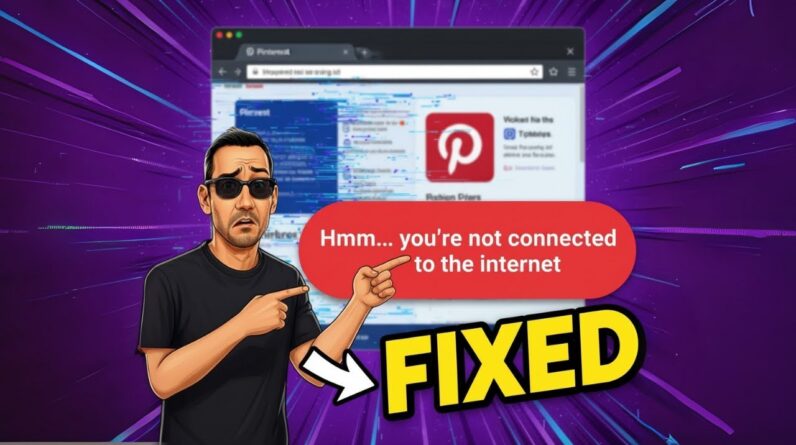
Are you looking for effective strategies to increase the traffic to your website? Look no further! Video marketing is a powerful tool that can help drive more visitors to your site and boost your online presence. With engaging and informative videos, you can captivate your audience and establish a strong connection with potential customers. In this article, we will explore the various ways you can harness the power of video marketing to attract more traffic to your website and ultimately grow your business. So, let’s get started and unlock the potential of video marketing together!
Creating Engaging Video Content
Identify Your Target Audience and Goals
When it comes to creating engaging video content, it’s important to first identify your target audience and goals. Who are you trying to reach with your videos? What is the purpose or message you want to convey? By understanding your target audience and setting clear goals, you can tailor your video content to resonate with your viewers and drive the desired action.
Plan Your Video Content
Once you have identified your target audience and goals, it’s time to plan your video content. Start by brainstorming ideas and topics that are relevant to your audience and align with your goals. Consider the format and style of your videos, whether you want to create tutorials, product demos, interviews, or storytelling videos. Map out a content calendar to ensure a consistent flow of videos and to avoid last-minute stress.
Focus on Storytelling
One of the most effective ways to create engaging video content is by focusing on storytelling. Stories have a unique way of capturing attention and evoking emotions, making them memorable for your viewers. Craft a narrative that is relatable, authentic, and connects with the desires and values of your audience. Whether it’s sharing customer success stories, showcasing behind-the-scenes moments, or conveying a powerful message, storytelling can captivate your viewers and keep them coming back for more.
Keep it Short and Concise
In today’s fast-paced digital landscape, attention spans are shrinking. To keep your audience engaged, it’s crucial to keep your video content short and concise. Aim for videos that are no longer than a few minutes, as this allows viewers to consume your content quickly and easily. By focusing on the most valuable and impactful information, you can deliver your message effectively without overwhelming your viewers. Remember, brevity is key when it comes to creating engaging video content.
Optimizing Videos for SEO
Keyword Research for Video Titles and Descriptions
Optimizing your videos for search engine optimization (SEO) can greatly increase their visibility and drive traffic to your website. One of the first steps in optimizing your videos is conducting keyword research. Identify relevant keywords and phrases that your target audience is likely to search for and incorporate them into your video titles and descriptions. This will help search engines understand the content of your videos and improve their ranking in search results.
Use Relevant Tags and Categories
Tags and categories play an important role in optimizing videos for SEO. Include relevant tags that describe the content and topic of your videos. These tags will help search engines categorize and index your videos, making them easier to discover by users. Additionally, assign your videos to appropriate categories that align with their subject matter. This further enhances their visibility and increases the chances of driving organic traffic to your website.
Create Transcripts and Captions
Creating transcripts and captions for your videos not only improves accessibility but also contributes to SEO optimization. Transcripts provide a text version of your video’s dialogue, allowing search engines to index and rank the content more accurately. This opens up opportunities for your videos to appear in search results for relevant keywords. Captions, on the other hand, not only make your videos more accessible to viewers with hearing impairments but also provide an additional layer of context for search engines to understand your video content.
Sharing Videos on Social Media
Leverage the Power of YouTube
YouTube is the second largest search engine after Google, making it a powerful platform for sharing your videos and driving traffic to your website. Create a YouTube channel for your business and optimize it with relevant keywords, an appealing channel banner, and a compelling description. Consistently upload high-quality and engaging videos that resonate with your target audience. Remember to include a link to your website in the video descriptions and use YouTube’s features like end screens and cards to direct viewers to your website.
Promote Videos on Facebook
Facebook has a massive user base and a built-in video player, making it an ideal platform to promote your videos and drive traffic to your website. When sharing videos on Facebook, focus on creating thumb-stopping content that captures attention in the news feed. Craft compelling captions that encourage viewers to click through and watch the full video on your website. You can also consider boosting your video posts or running targeted Facebook ads to reach a wider audience.
Utilize Instagram’s Video Features
Instagram offers various video features, including in-feed videos, Instagram Stories, and IGTV, to showcase your video content. Create visually appealing and attention-grabbing videos that align with your brand identity and style. Since Instagram is a mobile-centric platform, consider optimizing your videos for mobile viewing by using square or vertical formats. Be sure to leverage relevant hashtags, engaging captions, and strategic calls-to-action to drive viewers to your website.
Explore Twitter’s Video Options
Twitter may be known for its 280-character limit, but it also provides opportunities to share video content and drive website traffic. Upload short video clips or teasers that grab attention and pique curiosity. Use hashtags and relevant keywords to increase the discoverability of your videos. To drive traffic to your website, pin your videos to the top of your profile, include a strong call-to-action in your tweets, and engage with your audience to encourage sharing and retweeting.
Collaborating with Influencers
Identify Influencers in Your Niche
Partnering with influencers in your niche can be a valuable strategy to expand your reach and drive traffic to your website. Identify influencers who have a following that aligns with your target audience. Research their content, engagement rates, and authenticity to ensure they can effectively promote your brand. Look for influencers who have an established online presence and are known for creating high-quality and engaging content.
Reach out to Influencers for Collaborations
Once you have identified potential influencers, reach out to them with a personalized and well-crafted pitch. Explain why you believe a collaboration would be beneficial for both parties and how it aligns with their audience’s interests. Offer specific ideas or concepts for how you can work together, such as creating a sponsored video, hosting a joint live stream, or featuring each other’s content. Build a genuine relationship with the influencers and be open to their creative input for a successful collaboration.
Offer Value and Incentives
When collaborating with influencers, it’s important to offer them value and incentives to ensure a mutually beneficial partnership. Consider providing them with exclusive access to your product or service, offering monetary compensation, or arranging promotional opportunities for their own brand or content. By showing appreciation for their contribution and providing tangible benefits, you can motivate influencers to create engaging video content that drives traffic to your website.
Utilizing Email Marketing
Include Video Thumbnails in Email Campaigns
Email marketing is a powerful tool for nurturing relationships with your audience and driving traffic to your website. A great way to engage your email subscribers is by including video thumbnails in your email campaigns. These thumbnails can visually capture attention and act as clickable links that lead subscribers directly to the video on your website. Consider using compelling headlines or preview text to entice recipients to click and watch the video.
Create Video Teasers in Emails
Another effective strategy is to create video teasers in your emails. Teasers are short snippets or previews of your video content that create anticipation and encourage viewers to click through to watch the full video. Integrate a play button overlay on an attractive image or include a GIF that showcases a sneak peek of the video. This not only sparks curiosity but also drives traffic to your website where the complete video is hosted.
Segment Email List for Targeted Videos
To maximize the impact of your video marketing efforts, segment your email list and target specific videos to different segments. Identify the interests and preferences of your subscribers and tailor your video content accordingly. For example, if you have a product tutorial video, send it to subscribers who have shown interest in that particular product category. By delivering relevant and personalized video content, you can grab the attention of your subscribers and drive them to your website.
Embedding Videos on Your Website
Optimize Video Placement on Your Website
Embedding videos on your website can significantly enhance user engagement and increase the time visitors spend on your site. Carefully consider the placement of your videos to maximize their impact. Place videos prominently on your homepage, product pages, or blog posts where they provide the most value. Ensure that the video is visually appealing and seamlessly integrated into the design of your website while still being easily accessible and playable.
Use Attractive Thumbnails
Thumbnails are the first visual representation of your videos that viewers see. Create attractive and eye-catching thumbnails that accurately represent the content and capture attention. Choose high-resolution images that are clear and visually appealing. Consider adding overlays, text, or vibrant colors to make them stand out from other content on your website. A compelling thumbnail can entice visitors to click and watch your video, leading them to explore your website further.
Include Call-to-Action Buttons
To drive traffic and encourage action, include clear and strategically placed call-to-action (CTA) buttons in your videos. Use these buttons to direct viewers to specific landing pages, product pages, or download links on your website. Ensure that the CTA buttons are visually distinct and easily noticeable, without overshadowing the video content itself. By providing a clear next step for viewers, you can guide them to take the desired action and drive traffic to your website.
Running Paid Video Ads
Choose the Right Video Advertising Platform
Running paid video ads is an effective way to reach a wider audience and drive targeted traffic to your website. However, it’s important to choose the right video advertising platform that aligns with your goals and target audience. Platforms like Google Ads, Facebook Ads, or YouTube Ads offer different targeting options, ad formats, and audience reach. Evaluate the strengths and limitations of each platform to determine which one suits your video marketing strategy best.
Defining Your Target Audience
Before running paid video ads, it’s crucial to define your target audience. Clearly identify the demographics, interests, and behaviors of the audience you want to reach. By understanding your target audience’s characteristics, you can create highly relevant and engaging video ads that resonate with them. Utilize the targeting options provided by the video advertising platform of your choice to ensure your ads are shown to the right people who are most likely to visit your website.
Set Budget and Ad Parameters
To run successful paid video ads, it’s important to set a budget that aligns with your marketing goals. Determine how much you are willing to invest in video advertising and allocate your budget across different platforms and campaigns. Additionally, define the ad parameters such as ad duration, frequency, and placement to optimize the performance of your ads. Continuously monitor the results, adjust your budget and ad parameters, and optimize your campaigns to drive the desired traffic to your website.
Engaging with Your Audience
Respond to Comments and Feedback
Engagement with your audience is key to building a strong and loyal community around your videos. Take the time to respond to comments and feedback on your videos, whether they are positive or negative. Show appreciation for positive comments and address any concerns or issues raised in negative comments. By actively engaging with your audience, you demonstrate that you value their opinions and encourage ongoing conversations. This builds trust and encourages viewers to keep coming back to engage with your videos and visit your website.
Encourage User-Generated Content
User-generated content (UGC) not only fosters a sense of community but also creates opportunities to drive traffic to your website. Encourage your audience to create their own videos inspired by your brand or content and share them on social media platforms. You can incentivize UGC by running contests or giveaways that require participants to create videos. Showcase selected UGC videos on your website and social media channels, giving credit to the creators and linking back to your website. This not only boosts engagement but also drives traffic as viewers are inspired to visit your website.
Run Video Contests and Giveaways
Video contests and giveaways are effective tactics to engage your audience and generate excitement around your brand and content. Create innovative and fun video contests that encourage your audience to create and share videos related to specific themes or challenges. Offer attractive prizes or exclusive rewards to motivate participation. Additionally, consider hosting giveaways where viewers can enter by watching and commenting on your videos. These interactive competitions not only drive traffic but also generate buzz and increase the visibility of your brand and website.
Analyzing Video Performance
Track View, Engagement, and Conversion Metrics
Analyzing video performance is crucial to understand the impact of your video marketing efforts and make data-driven decisions. Monitor key metrics such as views, watch time, likes, comments, and shares to gauge the success and engagement of your videos. Additionally, track conversion metrics such as click-through rates or website traffic originating from your videos. Use analytics tools provided by platforms like YouTube, Facebook, or Google Ads to gather and analyze these metrics. By evaluating the data, you can identify trends, strengths, and areas for improvement in your video marketing strategy.
Identify Patterns and Optimize Strategy
Analyzing video performance allows you to identify patterns and trends that can shape your video marketing strategy. Pay attention to the types of videos that perform well in terms of views, engagement, and conversions. Identify common themes, styles, or formats that resonate with your audience and align with your goals. Double down on successful video content and adapt your strategy to incorporate similar elements in future videos. By understanding what works and what doesn’t, you can continuously optimize your video marketing efforts to drive traffic to your website.
Use A/B Testing for Improvement
A/B testing is a valuable technique to refine your video marketing strategy and drive better results. Experiment with different variables such as video titles, thumbnails, descriptions, or CTAs to determine which elements resonate best with your audience. Split your audience into groups and test different versions of your videos to measure their performance. Monitor the results and compare the metrics to identify the most effective elements. By continuously conducting A/B testing, you can make data-backed decisions and continuously improve the effectiveness of your videos in driving traffic to your website.
Staying Consistent and Up-to-Date
Maintain a Regular Video Publishing Schedule
Consistency is vital in video marketing. Create a regular video publishing schedule and stick to it. Whether it’s once a week, bi-weekly, or monthly, establish a routine that your audience can rely on. This regularity not only keeps your viewers engaged but also helps to build trust and loyalty. Plan and batch produce your videos in advance to ensure a consistent flow of content. Additionally, communicate your publishing schedule to your audience through your website, social media channels, and email newsletters to keep them informed and returning for new videos.
Stay Informed about Video Marketing Trends
Video marketing evolves rapidly, with new trends, techniques, and platforms emerging constantly. To stay ahead of the curve and drive continuous traffic to your website, it’s essential to stay informed about video marketing trends. Follow industry blogs, watch webinars, attend conferences, and join relevant communities to keep up with the latest developments. Explore new video platforms and features to expand your reach. By staying informed and adaptable, you can leverage emerging trends and technologies to engage your audience and drive traffic to your website.
Continuously Improve and Adapt
Successful video marketing requires continuous improvement and adaptation. Monitor the performance of your videos, gather feedback from your audience, and assess the effectiveness of your strategies. Identify areas for improvement and adapt your approach accordingly. Experiment with new formats, styles, or themes to keep your content fresh and engaging. Embrace feedback and suggestions from your audience and constantly refine your videos to meet their expectations. By consistently seeking improvement, you can effectively drive traffic to your website and achieve your video marketing goals.
In conclusion, video marketing is a powerful tool for driving traffic to your website. By creating engaging video content, optimizing for SEO, sharing on social media, collaborating with influencers, utilizing email marketing, embedding videos on your website, running paid video ads, engaging with your audience, analyzing video performance, and staying consistent and up-to-date, you can maximize the impact of video marketing and effectively drive traffic to your website. So, start incorporating video into your marketing strategy today and watch your website traffic soar!






